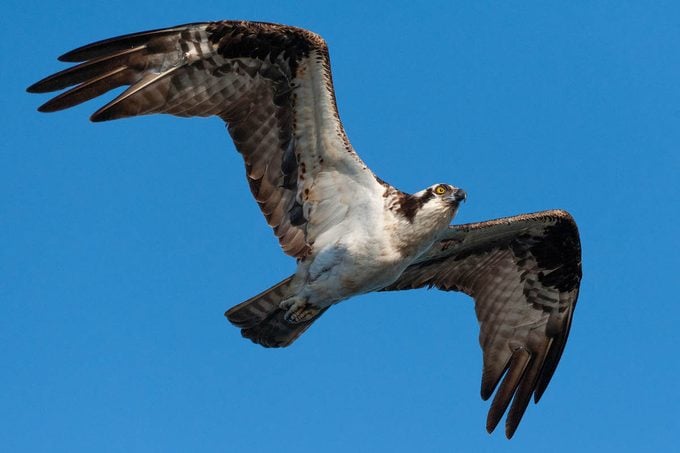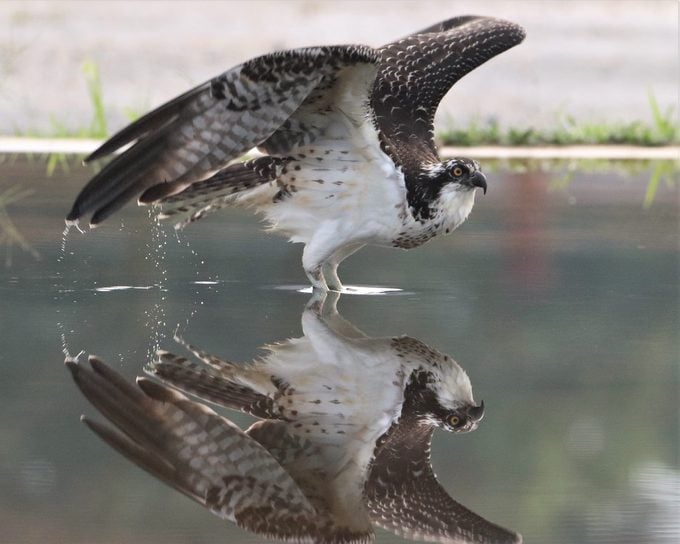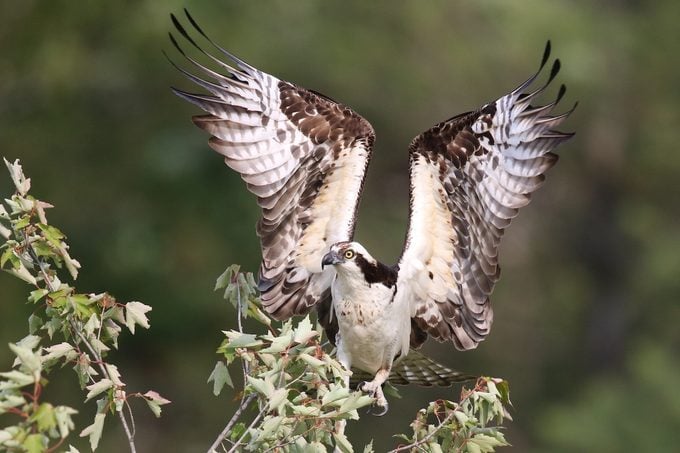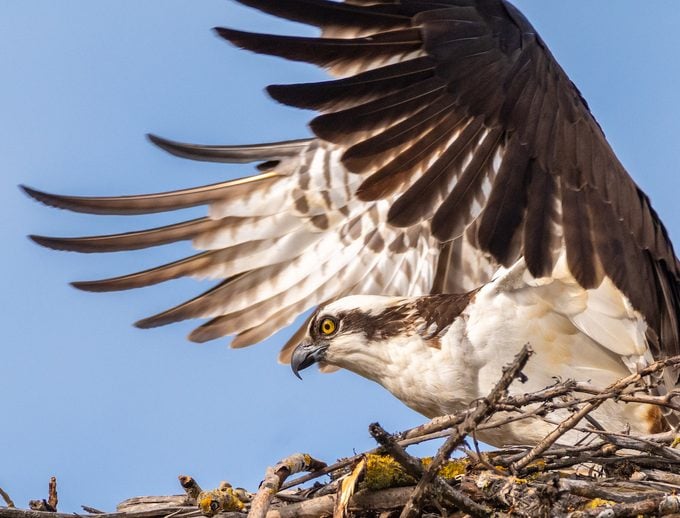Meet the Osprey Bird: Sea Hawk of the Sky
Updated: Jul. 10, 2024
Learn what an osprey bird looks like and where birders can find this raptor. Also find out what they eat and why they are called sea hawks.
On This Page
Osprey Bird Identification

With a wing diameter for 5.5 feet, an osprey bird is easy to spot. Smaller than a bald eagle, but larger than other raptors, with primarily white underparts and slightly bowed, M-shaped wings, along with a distinctive high-pitched chirp, it catches our attention.
Besides being fascinating to watch, osprey, which are also called fish hawks or sea hawks, are a success story. “They’re a cool bird because they recovered very well from getting rid of DDT in 1972,” says Marco Restani Ph.D., wildlife biologist at NorthWestern Energy with decades of experience with ospreys.
Meet 9 types of hawks you should know.
What Foods Does an Osprey Eat?

Cruising lakes, rivers, or the coastlines, these hawks target fresh and salt water fish species 4 to 12 inches long, and utilize its specially adapted vision, along with dark patches near its eyes, to allow it to see within the water. Once a fish is spotted, it sometimes hovers to pinpoint prey, then dives with its wings folded inward, sometimes reaching speeds up to 80 miles per hour.
“They plunge down and enter the water feet first,” says Marco. “Some of them completely submerge and might be two to three feet underwater.” Yet, even underwater, the osprey bird keeps an eye on its prey with the nictitating membrane, a transparent third eyelid.
How fast does a peregrine falcon fly?
Osprey Range and Habitat

“Osprey are cosmopolitan birds, as they breed on every continent, except Antarctica,” Marco says. He noted there are a few non-migratory populations, but most fly thousands of miles during the season, some even traveling over 4,000 miles on each journey.
Traveling along the coast or near inland water sources, keep an eye open for an osprey bird to enjoy a front row seat of their thrilling fishing techniques.
Why do crows chase hawks and owls?
Nests and Eggs

For nesting, Marco notes, “Naturally they like trees that are dead with the tops broken off. Unfortunately, power poles look exactly like that.” This is why power companies and wildlife organizations provide platforms out of harm’s way of energized power poles.
Setting up home near hot electrical wires aren’t their only challenge. “Geese are perfectly happy to take over a nest,” he said. “They tend to nest before the osprey arrive in many of these areas. When the ospreys get here, the nest is already occupied by geese, and they need to look again for another nesting opportunity.”
To stay ahead of this behavior, Marco says placing cones or a wire mesh on the nest discourages geese, or biologists might completely remove the 3 to 6-foot wide mass of bulky sticks. “Osprey are perfectly happy to rebuild them,” he says.
The female osprey bird lays two to four light-colored, often blotchy eggs that are the size of a large chicken egg approximately three days apart. Both parents incubate them. When they hatch, the female protects the nest while the male brings fish for the family. The young are ready to fly at seven to eight weeks old.
Juveniles are proficient at feeding themselves by the time of the fall migration. The female leaves a month before the male and young. The male and female, which pair bond, arrive at different times the following spring, as well.
Next, don’t miss these simply stunning pictures of hawks.
About the Expert
Marco Restani is a wildlife biologist at NorthWestern Energy. Marco is also a professor emeritus at St. Cloud State University and has a Ph.D. from Utah State University.




















